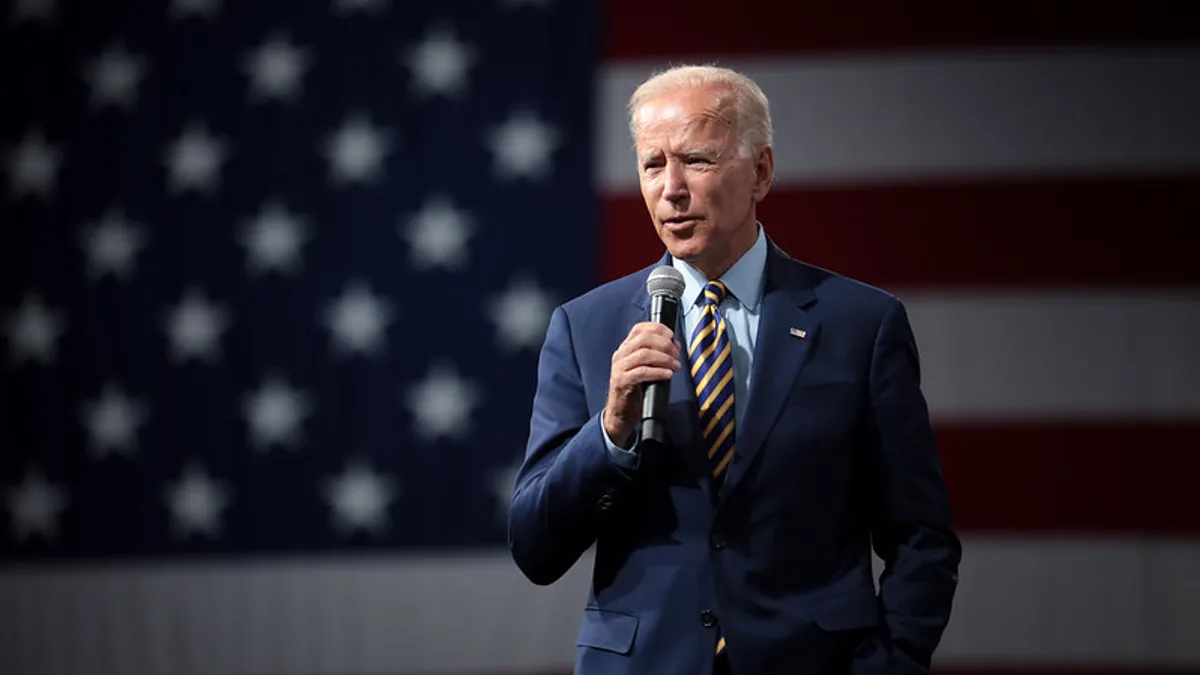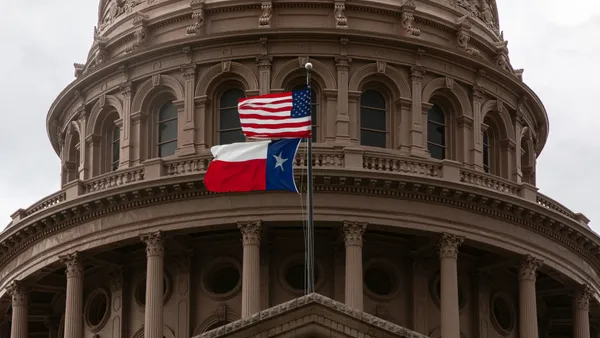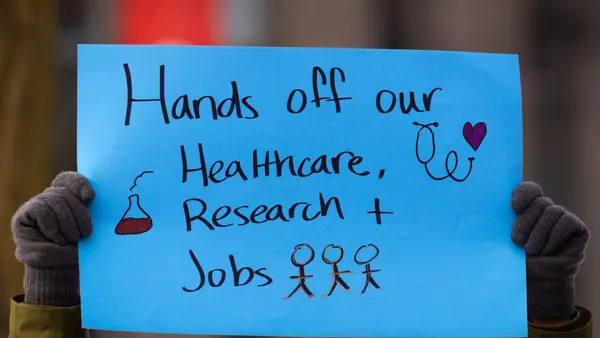Dive Brief:
-
President-elect Joe Biden is expected to unveil an immigration bill on Inauguration Day that would allow certain unauthorized students to apply for permanent residence and increase the number of work and family visas available.
-
Biden will also pitch an eight-year pathway to citizenship for unauthorized immigrants, The Washington Post first reported. The legislation would immediately allow those in the Deferred Action for Childhood Arrivals program to apply for green cards.
-
Higher education experts said the proposal would create a more welcoming environment for unauthorized and international students, though it's unclear how it will fare in Congress.
Dive Insight:
The incoming administration's approach to immigration contrasts that of the outgoing one, which pushed policies that make it harder for unauthorized and international students to study in the U.S.
The cornerstone of Biden's proposal is a direct pathway to citizenship for unauthorized immigrants. Qualifying applicants could receive a green card after being placed under temporary status for five years, according to The Post. They could seek citizenship three years later.
However, immigrants with DACA or a protected status for those fleeing war-torn or disaster-struck countries will be able to apply for green cards right away. DACA was created in 2012 to shield unauthorized immigrants brought to the U.S. as children from deportation.
This approach recognizes that DACA beneficiaries have been waiting for a chance to obtain permanent residence, said Gaby Pacheco, director of advocacy and communications for TheDream.Us, which awards college scholarships to unauthorized students. "We're talking about eight years of people already being in the system," she said.
Green cards will enable DACA recipients to apply for federal financial aid, which they're currently barred from accessing, as well as state grants. Some would also newly qualify for in-state college tuition.
The eight-year pathway to citizenship, meanwhile, benefits students who aren't covered by DACA, said Miriam Feldblum, executive director of the Presidents' Alliance on Higher Education and Immigration. Of the roughly 450,000 unauthorized students attending a college or university in the U.S., only about half are eligible for or participating in DACA, according to a report last year.
"It's important from the perspective of higher education that the pathway to certainty, to stability, to a future doesn't stop with DACA recipients but encompasses the broader undocumented student population," Feldblum said.
Biden's immigration proposal may face hurdles in Congress. Though two recent Senate run-off elections in Georgia gave Democrats narrow control of the chamber, they will need to win over some Republicans to pass the legislation.
The plan also includes changes that could benefit international students, as well as instructors and researchers, such as making more employment- and family-based visas available.
That would likely spur more foreign students to come to the U.S., said Jenny Lee, an education policy professor at the University of Arizona. "We do know that international students, particularly graduate students, come to the United States not just for quality education but also to find a better life for themselves and their families," Lee said. "That means finding job opportunities."
The number of international students in the U.S. declined for the first time in over a decade during the 2019-20 academic year, according to the annual Open Doors report.
The drop followed several Trump administration policies that were hostile to international students, including banning visitors from several Muslim-majority countries. Though the order carved out some exemptions for students, higher ed groups argued it hampered colleges' ability to recruit from these countries. Biden has vowed to reverse the travel ban on his first day.
But Feldblum said Biden should also implement a national strategy for recruiting and retaining international students. "The world has not stood still," she said. "And we are behind the curve."















